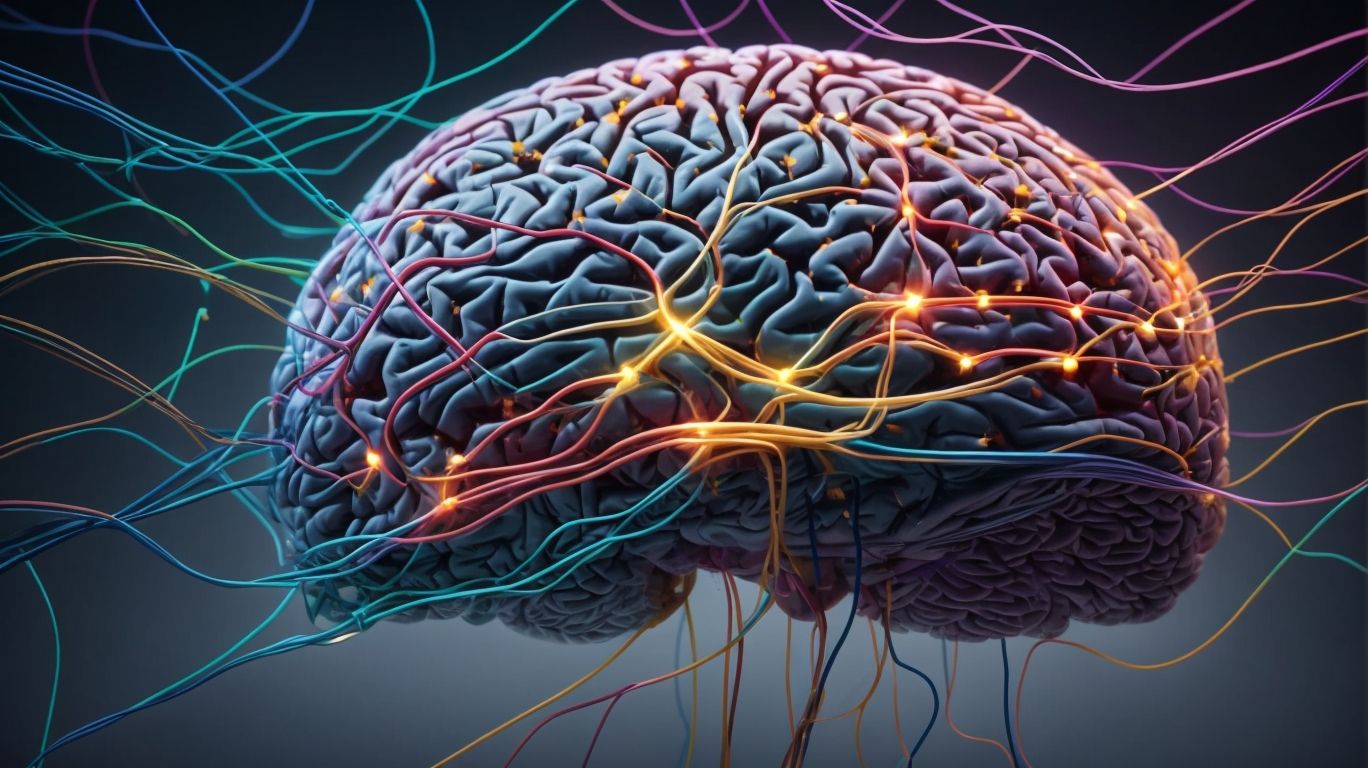Have you heard of EMDR therapy but aren’t quite sure what it is or how it works? In this article, we will explore the ins and outs of Eye Movement Desensitization and Reprocessing (EMDR) therapy in psychology.
From treating PTSD and managing depression to improving self-esteem and confidence, we will delve into the various applications of EMDR therapy. We will also discuss the efficacy and success rates of this therapy, as well as what to expect during a session and how to find a qualified EMDR therapist.
So, if you’re curious about this innovative therapy approach or looking for alternatives to traditional therapy, keep reading to learn more!
Contents
- 1 What Is EMDR Therapy?
- 2 How Does EMDR Therapy Work?
- 3 What Are the Applications of EMDR Therapy?
- 4 What Are the Efficacy and Success Rates of EMDR Therapy?
- 5 What to Expect During an EMDR Therapy Session?
- 6 How to Find a Qualified EMDR Therapist?
- 7 What Are the Alternatives to EMDR Therapy?
- 8 Frequently Asked Questions
What Is EMDR Therapy?
EMDR therapy, which stands for Eye Movement Desensitization and Reprocessing therapy, is a structured psychotherapy approach used to treat individuals dealing with distressing memories, trauma, and post-traumatic stress disorder (PTSD).
During EMDR therapy sessions, individuals focus on traumatic memories while the therapist guides them through specific sets of lateral eye movements, taps, or sounds. This bilateral stimulation is believed to help unlock and process unresolved memories in the brain, facilitating desensitization and reprocessing. By addressing deep-rooted emotional experiences, EMDR aims to alleviate negative symptoms associated with trauma, such as anxiety, flashbacks, and hypervigilance.
One of the unique characteristics of EMDR therapy is its comprehensive approach that integrates elements of cognitive-behavioral therapy with bilateral stimulation techniques. This combination allows for the reprocessing of traumatic memories, leading to adaptive resolution and a reduction in distressing symptoms.
How Does EMDR Therapy Work?
EMDR therapy works by engaging the brain’s natural healing processes through bilateral stimulation, typically involving left-right eye movements, to help individuals reprocess distressing memories, traumatic events, and negative cognitive perceptions.
This therapy operates based on the concept of Adaptive Information Processing (AIP), which suggests that when properly stimulated, the brain can better integrate disturbing experiences and shift them into more adaptive information. The bilateral stimulation mimics the rapid eye movement (REM) phase of sleep, facilitating the processing of memories. Through this process, the negative emotions associated with past events are weakened, allowing for cognitive restructuring and the establishment of more positive and constructive beliefs.
What Are the Applications of EMDR Therapy?
EMDR therapy finds applications in addressing various health conditions, particularly mental health issues, by providing a structured method to process traumatic experiences, reduce emotional distress, and improve overall well-being.
EMDR therapy has been widely used for individuals suffering from PTSD, anxiety disorders, depression, and phobias, proving effective in alleviating symptoms and enhancing mental resilience. It works by helping individuals reprocess distressing memories, enabling them to develop healthier coping mechanisms and reducing the impact of past trauma on their present lives.
This therapy method has shown promising results in promoting positive cognitive restructuring, fostering adaptive behavioral responses, and facilitating emotional regulation. By targeting the root causes of mental anguish, EMDR stimulates neural networks associated with healing, leading to profound transformative effects in individuals’ mental health and overall quality of life.
Treating PTSD
EMDR therapy has shown significant success in treating post-traumatic stress disorder (PTSD) by addressing symptoms related to traumatic events and promoting positive self-assessment and cognitive reframing.
During EMDR therapy, the therapist guides the individual through a series of bilateral stimulation techniques, such as eye movements or taps, which help desensitize traumatic memories. This process enables the individual to reprocess the traumatic events in a healthier way, reducing the emotional charge associated with them. By targeting specific PTSD symptoms like flashbacks, hypervigilance, and avoidance behaviors, EMDR therapy allows individuals to gain a deeper understanding of their triggers and develop more adaptive coping mechanisms.
Overcoming Anxiety and Phobias
Plus PTSD, EMDR therapy is effective in overcoming anxiety disorders and phobias by reprocessing distressing cognitive sensations and promoting adaptive responses to anxiety-inducing stimuli.
EMDR therapy utilizes a structured approach to target specific anxiety triggers and gradually desensitize the individual to those distressing stimuli. Through the process, the therapist guides the client in reprocessing negative beliefs and replacing them with more positive and adaptive thoughts. By fostering this cognitive restructuring, individuals can develop healthier coping mechanisms and reduce the intensity of their anxious responses.
Managing Depression
EMDR therapy offers a promising approach to managing depression by addressing negative experiencesand integrating cognitive-behavioral therapy techniques to foster positive emotional responses and self-belief.
EMDR stands for Eye Movement Desensitization and Reprocessing and works by helping individuals process distressing memories and experiences in a more adaptive way. Through targeted eye movements and other forms of bilateral stimulation, EMDR aims to reduce the emotional charge of past traumas that contribute to depression.
By targeting maladaptive thought patterns and cognitive distortions often associated with depressive disorders, EMDR helps individuals reprocess the negative beliefs and experiences that may be fueling their depression. This therapy works to create new, more positive associations, paving the way for improved emotional regulation and mental well-being.
Healing Traumatic Memories
One of the core applications of EMDR therapy is healing traumatic memories by utilizing a structured method to reprocess and integrate distressing memory fragments into a more adaptive and coherent narrative.
EMDR therapy employs a systematic approach to address the fragmentation of traumatic memories, helping individuals desensitize to the associated distress while facilitating the reconsolidation of these memories into more manageable and integrated forms.
This therapeutic process involves guiding the individual through sets of bilateral stimulation, such as eye movements or tactile sensations, to assist in processing and resolving the emotional charge attached to these memories.
Improving Self-Esteem and Confidence
Through targeted interventions, EMDR therapy aids in improving self-esteem and confidence levels by promoting positive self-belief, altering negative cognitive perceptions, and fostering adaptive memory reprocessing.
By diving into past experiences and emotions, EMDR allows individuals to reprocess distressing memories, shifting them from sources of pain to opportunities for growth. This technique enables individuals to challenge ingrained self-doubt, releasing emotional burdens and paving the way for increased self-assurance.
EMDR encourages clients to cultivate a sense of self-compassion and self-acceptance, fostering a more nurturing inner dialogue. Through this process, individuals can shed light on their strengths and capabilities, allowing them to embrace their worthiness and build a more positive self-identity.
What Are the Efficacy and Success Rates of EMDR Therapy?
The efficacy and success rates of EMDR therapy have been extensively studied through clinical trials and research, demonstrating its effectiveness in treating various mental health conditions and trauma-related symptoms.
Research has shown that EMDR therapy can significantly reduce symptoms associated with post-traumatic stress disorder (PTSD), anxiety, depression, and phobias. Numerous outcome studies have highlighted the long-lasting benefits of EMDR in alleviating distressing memories and improving overall mental well-being. Meta-analyses have confirmed the positive impact of EMDR on individuals across different age groups and cultural backgrounds, further solidifying its status as a reputable therapeutic approach for trauma resolution.
Research Studies on EMDR Therapy
Numerous research studies conducted by reputable organizations such as the Department of Veterans Affairs, Department of Defense, and World Health Organization have corroborated the effectiveness of EMDR therapy in treating trauma-related conditions.
EMDR therapy has been recognized as a proven method for alleviating symptoms of post-traumatic stress disorder (PTSD), anxiety, and depression. Research from these esteemed organizations highlights the significant role EMDR plays in addressing the root causes of trauma and facilitating healing through guided eye movements and cognitive processing. This innovative approach offers a non-invasive and evidence-based solution for individuals grappling with the impact of traumatic experiences on their mental health.
Client Testimonials and Success Stories
Client testimonials and success stories regarding EMDR therapy often highlight the transformative impact it has on individuals’ lives, showcasing positive self-assessment changes similar to those observed in clinical trials.
Many individuals undergoing EMDR therapy have reported significant reductions in symptoms associated with past traumas, such as intrusive thoughts, nightmares, and anxiety. One particular case study showed a remarkable improvement in a veteran’s PTSD symptoms, enabling him to reconnect with his family and experience a newfound sense of peace.
EMDR therapy doesn’t just target the symptoms but also delves deep into the root causes of trauma, allowing individuals to process and resolve the distressing memories that have been holding them back.
What to Expect During an EMDR Therapy Session?
During an EMDR therapy session, individuals can expect to revisit distressing memories, engage in cognitive processing of associated sensations, and undergo bilateral stimulation techniques to facilitate memory reprocessing and adaptive resolution.
Typically, a session starts by identifying the target memory that needs to be processed, carefully recounting the details and associated feelings. The therapist then guides the individual through specific eye movements, sounds, or taps to stimulate bilateral brain activity, fostering the integration of the memory with more positive beliefs.
In between sets of bilateral stimulation, the therapist helps the individual notice any emerging thoughts, emotions, or physical sensations, encouraging reflection and processing of these experiences. Over time, this repetitive process allows for the restructuring of the distressing memory, diminishing its emotional charge and promoting a sense of resolution and understanding.
How to Find a Qualified EMDR Therapist?
When seeking a qualified EMDR therapist, individuals can explore reputable institutions such as the Cleveland Clinic or providers certified by recognized experts like Francis Shapiro to ensure professional expertise and adherence to therapeutic standards.
It is crucial to check for the therapist’s certification from organizations like the EMDR International Association (EMDRIA) or the EMDR Institute, ensuring they have undergone rigorous training in EMDR protocols and techniques.
Seeking recommendations from mental health professionals or reading reviews from former clients can provide valuable insights into the therapist’s efficacy in delivering EMDR treatment.
Some influential endorsements in the field come from organizations like the American Psychological Association, which recognizes the effectiveness of EMDR therapy in treating trauma-related disorders.
What Are the Alternatives to EMDR Therapy?
Alternative therapeutic approaches to EMDR therapy include cognitive behavioral therapy, exposure therapy, and other health therapy methods that have been studied in controlled trials to assess their efficacy in treating mental health conditions.
These evidence-based practices offer valuable tools for mental health professionals to address a wide range of psychological issues. Cognitive behavioral therapy (CBT), for instance, focuses on identifying and challenging negative thought patterns and behaviors. This approach aims to change how a person thinks and acts in response to specific triggers or situations. On the other hand, exposure therapy involves gradual and controlled exposure to the feared object or situation, allowing individuals to confront their fears and learn healthy coping mechanisms.
In clinical applications, CBT is commonly used to treat anxiety disorders, depression, post-traumatic stress disorder (PTSD), and obsessive-compulsive disorder (OCD). Many studies have shown its effectiveness in improving symptoms and enhancing overall well-being. Similarly, exposure therapy has been successful in treating phobias, PTSD, and other anxiety-related conditions by helping individuals confront their fears in a safe and supportive environment.
Through controlled trials and research studies, both CBT and exposure therapy have demonstrated positive outcomes in reducing symptoms, improving quality of life, and promoting long-term recovery for individuals struggling with mental health challenges. By understanding the methodologies and clinical applications of these evidence-based practices, mental health professionals can tailor treatment plans to meet the unique needs of each client, fostering a comprehensive and holistic approach to healing.
Frequently Asked Questions
What is EMDR Therapy and how is it used in psychology?
EMDR stands for Eye Movement Desensitization and Reprocessing therapy. It is a type of psychotherapy that involves using bilateral stimulation, such as eye movements or hand tapping, to help individuals process and cope with traumatic experiences. In psychology, EMDR is often used to treat conditions such as post-traumatic stress disorder (PTSD), anxiety, and depression.
How does EMDR Therapy work?
EMDR therapy works by helping individuals access and process traumatic memories in a safe and controlled manner. During a session, a therapist will guide the person through a series of eye movements or other bilateral stimulation techniques while having them focus on a specific traumatic event. This helps to activate the brain’s natural healing processes and allows the individual to reprocess the traumatic memory in a more adaptive way.
What are the potential applications of EMDR Therapy?
EMDR Therapy has been used to successfully treat a variety of conditions including PTSD, anxiety, depression, phobias, and more. It has also been found to be effective in treating symptoms related to adverse childhood experiences, grief and loss, and performance anxiety. EMDR can also be beneficial for individuals who want to improve their overall emotional and mental well-being.
Is EMDR Therapy effective?
Many studies have shown that EMDR Therapy can be a highly effective treatment for various mental health conditions. It has been found to be just as effective as other forms of psychotherapy, and even more effective in some cases. Additionally, the effects of EMDR therapy tend to be long-lasting, making it a valuable treatment option for individuals seeking lasting relief from their symptoms.
Is EMDR Therapy suitable for everyone?
While EMDR Therapy has been found to be beneficial for many individuals, it may not be suitable for everyone. It is important to consult with a trained therapist to determine if EMDR is the right treatment approach for your specific needs. Additionally, individuals with certain mental health conditions, such as dissociative disorders or psychosis, may not be good candidates for EMDR therapy.
How long does EMDR Therapy take?
The length of EMDR therapy can vary depending on the individual and their specific needs. Some individuals may see improvements after just a few sessions, while others may require more long-term treatment. On average, EMDR therapy can take anywhere from 6-12 sessions, but this can vary based on the severity of symptoms and the individual’s progress in therapy.




